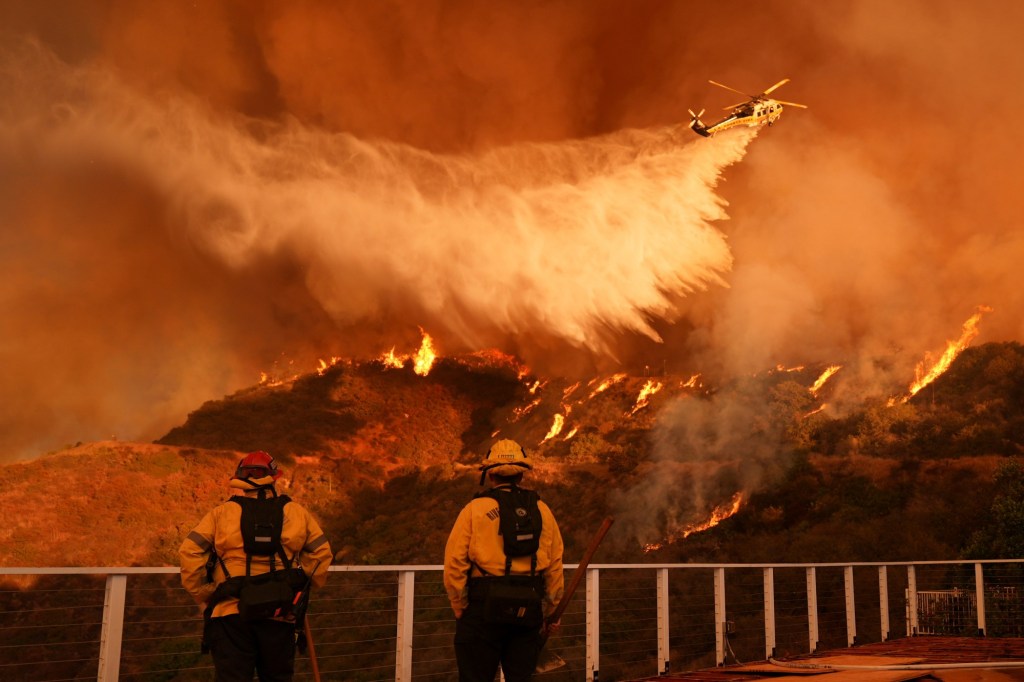

SDG&E said Sunday it will notify many customers later today that their power might be turned off ahead of the fresh round of Santa Ana winds that are expected to reach San Diego County on Monday night.
Some of the winds could follow the mountain-to-coast corridor that spread the devastating Witch Creek fire in October 2007, the National Weather Service said. The roughly 100,000-acre blaze was largely responsible for destroying more than 1,100 homes and, at one point, appeared headed directly for San Diego.
The weather service plans to issue a red-flag fire weather warning on Monday, when the Santa Anas begin to blow through the county’s eastern mountains, passes and foothills. The windstorm will peak on Tuesday when winds gust 40 mph to 50 mph in many inland areas and 20 mph to 30 mph at some spots along the coast.
“This is going to be another long duration event because it won’t fully subside until Wednesday,” said Brian D’Agostino, vice president of wildfire and climate science at SDG&E.
“The state of the (vegetation) is very concerning because it is so dry, especially above the 2,000-foot level.”
San Diego International Airport has recorded only 0.16 inches of rain since July 1. A low-pressure system offshore could spin some moisture into the county on Tuesday. But forecasters said it would do little to nothing to tamp down the risk of wildfires.
The incoming winds will largely arrive from the east and have a fairly clearly path to the ocean. Some winds are expected to flow along a path that cuts through Lake Hodges, Olivenhain, Rancho San Fe en route to Encinitas, Solana Beach and Del Mar — a route similar to the one involved in the Witch Creek fire. A second corridor could funnel winds through Valley Center and Fallbrook all the way to Oceanside and Camp Pendleton.
“The only natural mechanism for starting wildfires is lightning, and we won’t be having that,” said Phil Gonsalves, a weather service forecaster.
“Almost all wildfires are man-made — something that’s controllable by humans. People need to aware, alert and careful about what could happen. And people should remember that a lot of fires that start in the backcountry — like the 2003 Cedar Creek fire — burn west toward the coast.”






